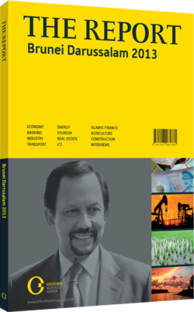ASEAN trade: Decades of planning and agreements are coming to fruition
In 2013 Brunei Darussalam takes over the chairmanship of ASEAN at a crucial juncture for both the trading bloc and the country’s aspirations. The region faces several challenges, from territorial disputes in the South China Sea to implementing the criteria for the ASEAN Economic Community (AEC). With its one-year chairmanship, the Sultanate will be at the forefront of negotiations over regional issues.
TRADE: Brunei Darussalam has been a member of ASEAN ever since its independence in 1984. The 10-member trading bloc, which was established in 1967, has become a crucial market and trading partner for the Sultanate. In the third quarter of 2012 the bloc accounted for 17.5% of the country’s total exports, or BN$713m ($555m), and 39.3% of its imports, at BN$542m ($422m), according to the Department of Economic Planning and Development.
However, given its dependence on hydrocarbons for export revenue (more than half of which is generated from Japan and India), these figures do not tell the whole story. Discounting hydrocarbon exports, the ASEAN region accounts for 81.3% of the Sultanate’s total exports – BN$295m ($230m) in the third quarter of 2012 – and the country’s balance of trade with the region would be negative; including oil and gas exports, in the third quarter of 2012, the Sultanate had a positive balance of trade of BN$171.2m ($133.3m).
INTEGRATION: The Sultanate has been an enthusiastic advocate of closer regional integration and trade. Brunei Darussalam was one of the founding signatories to the ASEAN Free Trade Agreement (AFTA) in 1992, an attempt to attract FDI and bring greater regional competitiveness by eliminating tariff and non-tariff barriers within ASEAN. As a result of negotiations on a Common Effective Preferential Tariff (CEPT), which called for a reduction in tariffs on a wide range of goods to no more than 5%, the country has substantially reduced its tariffs imposed on member nations.
Indeed, the CEPT in the country fell from 3.78% in 1993 to 1.04% in 2003. In May 2010 the ASEAN Trade in Goods Agreement was signed, a move that reduced tariffs on a list of 7881 items to zero among the six leading members of ASEAN (Brunei Darussalam, Indonesia, Malaysia, the Philippines, Singapore and Thailand).
AFTA EFFECTS: The emergence of AFTA has had a substantial impact on regional trade. According to a 2006 study for the Asia Pacific Research and Training Network on Trade by Indira Hapsari and Carlos Mangunsong, “Determinants of AFTA Members’ Trade Flows and Potential for Trade Diversion”, the establishment of AFTA and the reduction in tariffs had a substantial impact on bilateral trade within ASEAN.
Between 1993 and 2000 the total trade among ASEAN countries increased at an annual average of 11.6% to $95.2bn. By 2010, intra-ASEAN trade was worth $519.8bn, representing 25.4% of the bloc’s total global trade, according to the ASEAN Secretariat. Given the success of AFTA, the next step is introducing the AEC by 2015, a single market and community integrated into the regional and global economy.
The country’s stewardship of ASEAN comes at an important time for the prospects of the AEC. The members have drawn up four pillars with criteria to achieve by 2015: a single market and production base, competitive regional economy, equitable economic development and integration into the global economy. As of April 2012, member states had met 68.2% of the targets for the 2008-11 period, suggesting that serious work lies ahead to beat the deadline. Most progress has been met on integration into the global economy (with 85.7% of targets met), while member states lag behind on criteria for the single market and production base (66.5% of targets met). One problem remains adherence to regulations regarding the flow of goods, as challenges to improving the trading environment persist in several countries. Integration of the less-developed member states – Vietnam, Cambodia, Laos and Myanmar – is also a key issue. Nevertheless, with Brunei Darussalam assuming the chair, ASEAN will continue to push forward with plans to expand its trade network.
You have reached the limit of premium articles you can view for free.
Choose from the options below to purchase print or digital editions of our Reports. You can also purchase a website subscription giving you unlimited access to all of our Reports online for 12 months.
If you have already purchased this Report or have a website subscription, please login to continue.

